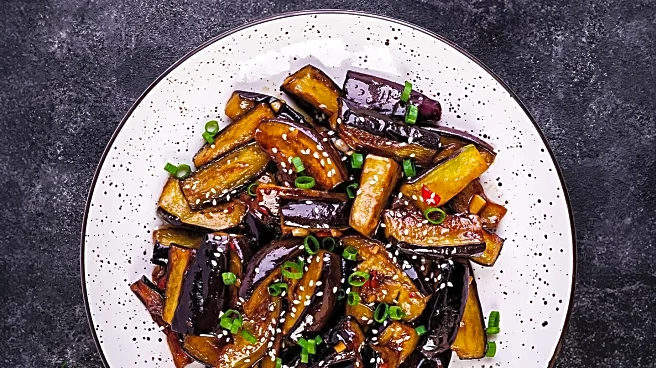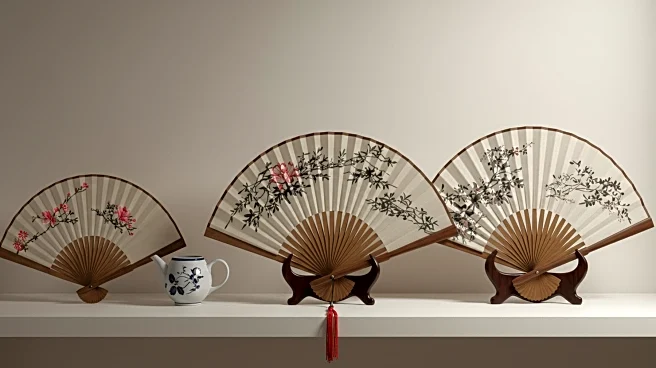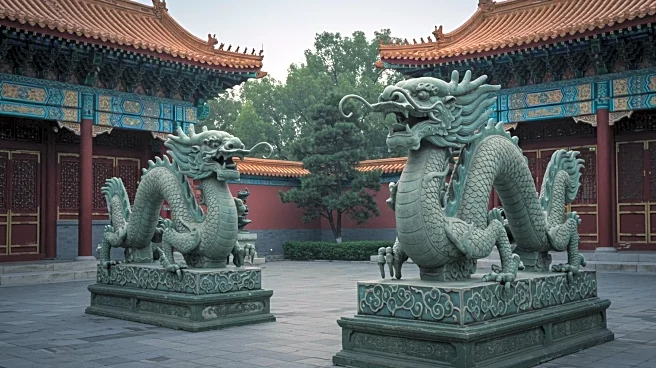What is the story about?
What's Happening?
A recent recipe column has spotlighted the use of gochujang, a Korean pepper paste, in an eggplant stir-fry. The column discusses the versatility of eggplant, which is available year-round but peaks in summer, offering various varieties such as purple-and-white striped and milky-white specimens. The recipe aims to explore flavors beyond the typical Italian profile associated with eggplant, opting instead for Asian influences. Gochujang is praised for its ability to enhance the dish with its savory and spicy characteristics, complemented by ingredients like toasted sesame oil, rice vinegar, garlic, and ginger. The column emphasizes the adaptability of eggplant as a base for diverse culinary explorations.
Why It's Important?
The column's focus on gochujang and eggplant highlights the growing interest in global flavors and culinary experimentation in the U.S. food scene. By introducing readers to Korean ingredients, it encourages diversification in cooking practices and broadens the palate of home cooks. This trend reflects a larger movement towards embracing multicultural influences in American cuisine, potentially impacting food industry offerings and consumer preferences. As more people seek out unique and bold flavors, there could be increased demand for international ingredients, influencing grocery store inventories and restaurant menus.
What's Next?
The exploration of gochujang in recipes may inspire further culinary innovation, leading to new dishes that incorporate this ingredient. As home cooks experiment with global flavors, there may be a rise in fusion cuisine, blending traditional American dishes with international elements. This could also prompt food companies to develop new products that cater to adventurous eaters, potentially expanding the market for ethnic foods. Additionally, cooking classes and food blogs might increasingly feature gochujang and similar ingredients, further integrating them into mainstream cooking practices.
Beyond the Headlines
The inclusion of gochujang in a popular recipe column underscores the cultural exchange occurring in the culinary world. It reflects a shift towards appreciating and understanding diverse food traditions, fostering cross-cultural connections. This trend may contribute to greater cultural awareness and acceptance, as food often serves as a gateway to exploring different cultures. Moreover, it highlights the role of media in shaping food trends and influencing consumer behavior, as readers are introduced to new ingredients and cooking techniques.
AI Generated Content
Do you find this article useful?











